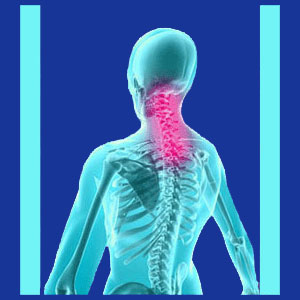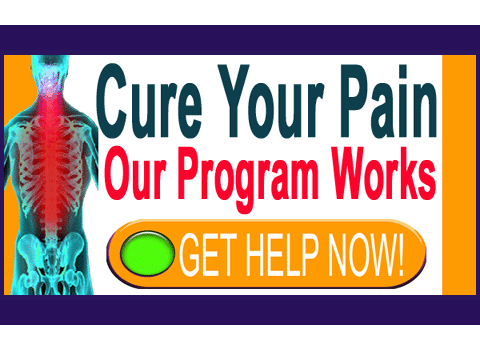
Many patients are looking for relief from cervical spinal stenosis, but are not sure which type of therapy will work best and pose them the least degree of risk. Spinal stenosis is always a serious concern, since it has the potential to compress the spinal cord or spinal nerve roots within the central vertebral canal, within the lateral recesses or within the foraminal openings. Symptoms can be expressed virtually all over the body and can prove debilitating for many affected people worldwide.
Spinal stenosis is luckily one of the most successfully treated of all dorsalgia conditions. However, most of the curative modalities are surgical in nature, creating worry and risk with very real dangers. In order to avoid surgery, patients might have to opt for noninvasive symptom-based treatment that will never resolve the actual cause of pain. This can be a frustrating financial burden and is tantamount to slavery.
In order to assist neck pain sufferers in finding the best treatment for cervical spinal stenosis, we have created this simple and truthful therapy guide that provides a balanced view of the good and bad aspects of the most commonly utilized therapies for spinal canal impingement in the neck.
Lasting Relief from Cervical Spinal Stenosis
Spinal stenosis in the neck is normal to experience as we get older and most cases will never reach symptom-generating severities. However, when the central or foraminal canals become too snug for comfort, neurological compression can occur. Compressed nerves will not function normally, if at all. Usually, symptoms will progress from tingling and pain to numbness and weakness to utter dysfunction in innervated areas of the anatomy. Many people with advanced stenosis are disabled and can not work, walk or even stand under their own power. Other possible collateral effects include sexual dysfunction, incontinence and autonomic malfunctions.
Spinal stenosis is most often brought about due to permanent changes in the anatomy of the central and foraminal canals. These changes occur due to the accumulation of arthritis and are worsened by the universal process of intervertebral desiccation. Some cases of stenosis are facilitated by additional factors, such as spondylolisthesis, scoliosis, hyper or hypo lordosis or kyphosis. Ligamentous ossification and hypertrophic conditions are seen in fewer patients, but are still possible causes of stenosis. Fortunate patients might suffer transient stenosis due to herniated discs, allowing them more treatment options which are still considered curative modalities of care.
Most spinal stenosis cures are delivered via the surgical treatment route. The procedure used usually involves laminectomy, although corpectomy might be substituted in very extreme stenosis scenarios. These operations leave massive trauma to the spine and usually require reparative measures be implemented to stabilize the vertebral column. Spinal fusion is the most common choice, sometimes assisted by implant prosthetics.
Some disc-enacted stenosis can be treated using discectomy, IDET or nucleoplasty techniques which are much less invasive than laminectomy. Some very fortunate patients might find true and lasting cures for particular types of stenosis using nonsurgical spinal decompression, such as that offered by the DRX9000C, AccuSpina, Antalgic Trak, VAX-D and manually-applied Cox Decompression.
Symptomatic Relief from Spinal Stenosis
Noncritical stenosis can be successfully managed for extended timelines in most patients using conservative care regimens. There are many practices commonly used, with some being more effective and better tolerated than others. Additionally, the risks of various treatments range greatly and should always be carefully considered by patients when deciding on the best course of care:
Manual therapies, such as chiropractic and massage, might provide some measure of relief. Chiropractic may have some positive effect on the actual spinal canal impingement, if severe subluxations are contributory factors to the stenosis. Neither is likely to provide a cure and some experts cite that regular chiropractic adjustments actually help to facilitate the osteoarthritic processes which cause stenosis.
Drug therapies will never do anything to resolve stenosis, but may help to bury the symptoms under a pharmaceutical smokescreen. Unfortunately, drugs are incredibly dangerous and demonstrate catastrophic negative health effects, particularly when used over long timelines of treatment. Epidurals are injected drug therapies that can provide a long duration of pain relief for some patients, but also demonstrate significant risks.
Physical and exercise therapy might not do anything to resolve the stenosis, but might provide temporary relief from symptoms in patients who are still capable of athletic endeavors. At least exercise and physical therapy provide no risk factors and are both very healthy activities.
Nerve and energy manipulation therapies, such as TENS, acupressure, acupuncture and reiki may provide symptomatic reduction in some patients. Acupuncture is statistically the best choice of the three for stenosis patients.
Traction and inversion devices are helpful to some, but also entail risk factors that should be discussed with a doctor before use.
You can find specific details of all of these therapies in our neck pain treatment resource guide.
Cervical Spinal Stenosis Relief
The Cure Back Pain Network is well known (almost notorious) for its anti-surgery views for most back and neck pain problems. There is simply too much misdiagnosis, as well as too many risks and complications associated with most surgical techniques, for us to recommend them in good conscience. However, when it comes to spinal stenosis, we tend to deviate in our opinion for many patient scenarios.
Given an enlightened diagnosis of the cause of pain and verification of this diagnosis with symptomatic and clinical correlation, curative surgical methods of care can actually resolve stenosis completely and return successfully-treated patients to a normal life. Positive treatment statistics are highest for stenosis suffers when compared against all other neck pain diagnoses. While many patients still do not achieve lasting (or any) relief, stenosis presents the best case scenario for surgical intervention in our professional opinion. We do advise using the least invasive type of surgical care available and doing everything possible to avoid corpectomy and spinal fusion. Both of these operative techniques are the most complication-fraught aspects of surgical treatment for most patients.
Patients who can benefit from nonsurgical spinal decompression are certainly advised to explore this option first, since the therapy can provide a lasting cure with virtually no risk and no invasive care. However, the only real cause of stenosis that can be successfully treated in most patients is that enacted by intact herniated discs.
Patients who want to avoid surgery usually can, at least for the time being. However, many will require symptom-based care that can become inconvenient, decreasingly effective, risky and very expensive. There are many choices, but we wholeheartedly advise staying clear of prescription drug use, since the collateral effects might become worse than the stenosis itself and the bodily damage will be impossible to fix. Instead, we tend to suggest exercise therapy, acupuncture, TENS, massage and chiropractic, not because of their efficacy for stenosis per se, but instead due to their general health benefits and lack of risk factors.
Neck Pain > Spinal Stenosis Neck Pain > Relief from Cervical Spinal Stenosis





